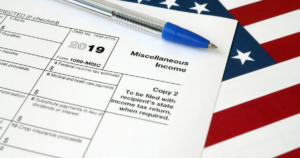In today’s competitive business environment, effective corporate tax planning is crucial for maximizing savings and improving your company’s bottom line. While many businesses focus on revenue growth and cost-cutting, optimizing your tax strategy is equally important for maintaining financial health. Proper tax planning not only ensures compliance with regulations but also unlocks opportunities for significant business tax savings. This article delves into corporate tax planning strategies that can help your business minimize its tax liabilities while maximizing profitability.
1. Understanding Corporate Tax Obligations
What Are Corporate Taxes?
Corporate taxes are levies imposed on the profits of a company by the government. These taxes are a major component of the overall tax burden on businesses. They include federal, state, and sometimes local taxes, depending on where your business operates. Understanding the different types of corporate taxes is the first step toward effective tax planning. Federal taxes are applied uniformly across the country, while state and local taxes can vary significantly, impacting your overall tax liability.
Maintaining compliance with tax laws is not just about avoiding penalties; it’s about building a strong foundation for tax planning. Non-compliance can lead to severe consequences, including fines, legal action, and damage to your company’s reputation. To stay compliant, it’s essential to stay updated with the ever-changing tax laws. This includes understanding the implications of new regulations and ensuring that your tax filings are accurate and timely.
2. Deferring Income
One of the simplest yet most effective strategies in corporate tax planning is deferring income. This involves postponing the recognition of income to the next tax year, thereby reducing the current year’s taxable income. This strategy is particularly beneficial if you expect to be in a lower tax bracket in the following year. However, it’s essential to weigh the benefits against potential risks, such as changes in tax laws or unexpected shifts in your business’s financial situation.
3. Accelerating Deductions
Accelerating deductions is another strategy that can significantly reduce your taxable income. By accelerating deductions, you increase your expenses for the current tax year, which in turn lowers your taxable income. Common deductible expenses include operating costs, marketing expenses, and employee benefits. This strategy works particularly well when you anticipate higher income in the current year compared to the next.
4. Maximizing Credits and Incentives
Tax credits and incentives are powerful tools for reducing your overall tax liability. Unlike deductions, which reduce your taxable income, tax credits directly reduce the amount of tax you owe. Common credits include those for research and development, energy efficiency, and hiring certain categories of employees. It’s crucial to be aware of the various credits available and to claim them correctly to maximize your savings.
5. Properly Timing Business Expenses
The timing of your business expenses can have a significant impact on your tax liability. By strategically timing these expenses, you can align them with your business’s income flow to achieve the best tax outcomes. For instance, paying bonuses or purchasing necessary equipment at the end of the fiscal year can help reduce taxable income for that year. It’s important to plan these expenditures carefully to ensure they contribute to tax savings.
6. Choosing the Right Business Structure
Your business structure plays a pivotal role in determining your tax obligations. Whether your company is a C-corporation, S-corporation, or LLC, each structure has different tax implications. For example, C-corporations face double taxation—once on corporate profits and again on dividends distributed to shareholders. In contrast, S-corporations and LLCs offer pass-through taxation, where profits are taxed only at the individual level. Understanding these differences and choosing the right structure can lead to substantial business tax savings.
7. Utilizing Retirement Plans and Employee Benefits
Offering retirement plans and employee benefits can be a win-win for both your employees and your business. These plans not only help attract and retain top talent but also offer significant tax advantages. Contributions to employee retirement plans are typically tax-deductible, reducing your company’s taxable income. Additionally, offering benefits such as health insurance can qualify your business for tax credits, further enhancing your tax savings.
8. Tax Loss Harvesting
Tax loss harvesting is an advanced strategy that involves selling investments at a loss to offset gains elsewhere in your portfolio. While this strategy is more commonly associated with personal finance, businesses can also use it to reduce their taxable income. By carefully managing your investments and timing your losses, you can minimize your tax liability and improve your company’s overall financial performance.
9. International Tax Planning
For multinational corporations, international tax planning is essential to managing taxes across different jurisdictions. This involves understanding the tax laws of each country where your business operates and finding ways to minimize global tax liability. Strategies may include using tax treaties, optimizing transfer pricing, and taking advantage of foreign tax credits. Effective international tax planning requires a deep understanding of global tax regulations and a proactive approach to managing tax risks.
10. Transfer Pricing
Transfer pricing refers to the pricing of goods, services, and intangibles between related entities within a multinational corporation. This practice can significantly impact a company’s tax liability, especially in jurisdictions with different tax rates. Proper transfer pricing ensures that profits are allocated in a way that minimizes global tax liabilities while staying compliant with international tax laws. Given its complexity, transfer pricing requires careful planning and documentation to avoid legal issues.
11. Leveraging Tax-Advantaged Investments
Investing in tax-advantaged assets can provide your business with additional tax savings. These investments include municipal bonds, low-income housing projects, and renewable energy initiatives, all of which offer tax benefits. By incorporating tax-advantaged investments into your corporate strategy, you can reduce your taxable income while supporting socially responsible projects. This not only helps in tax planning but also enhances your company’s reputation.
12. Choosing a Tax Professional
Navigating the complexities of corporate tax planning can be challenging, which is why hiring a tax advisor is crucial. A professional tax advisor brings expertise and insight that can help you identify tax-saving opportunities that you might otherwise overlook. They can also ensure that your company remains compliant with all tax laws, helping you avoid costly penalties. Choosing the right tax professional—one who understands your industry and business model—is key to maximizing your tax savings.
Collaboration with Financial Advisors
Collaborating with both tax and financial advisors ensures a holistic approach to your company’s financial health. While tax advisors focus on minimizing your tax liability, financial advisors help you achieve long-term financial goals. By working together, they can create a cohesive strategy that aligns your tax planning with broader financial objectives, maximizing your company’s profitability and sustainability.
13. Staying Updated with Tax Law Changes
Tax laws are constantly evolving, and staying informed about these changes is essential for effective corporate tax planning. Legislative changes can have a significant impact on your company’s tax obligations, so it’s crucial to monitor new laws and regulations. Resources such as tax news websites, industry publications, and professional tax advisors can help you stay updated and adapt your strategies accordingly.
14. Adapting Your Tax Strategy
Flexibility is key in tax planning. As tax laws change, your company must be prepared to adjust its strategies to maintain compliance and continue maximizing tax savings. This may involve reevaluating your business structure, adjusting the timing of income and expenses, or exploring new tax credits and deductions. By staying agile and proactive, your company can navigate the complexities of tax planning and continue to thrive in a dynamic business environment.
Conclusion
Effective corporate tax planning is an ongoing process that requires attention to detail, strategic foresight, and a deep understanding of tax laws. By implementing the strategies discussed in this article—from deferring income and accelerating deductions to leveraging advanced techniques like tax loss harvesting—your business can maximize tax savings and improve its financial health. Remember, consulting with a Professional Tax Advisor is crucial to ensuring that your tax strategy is both effective and compliant. With the right approach, corporate tax planning can be a powerful tool for enhancing your company’s profitability and long-term success.





